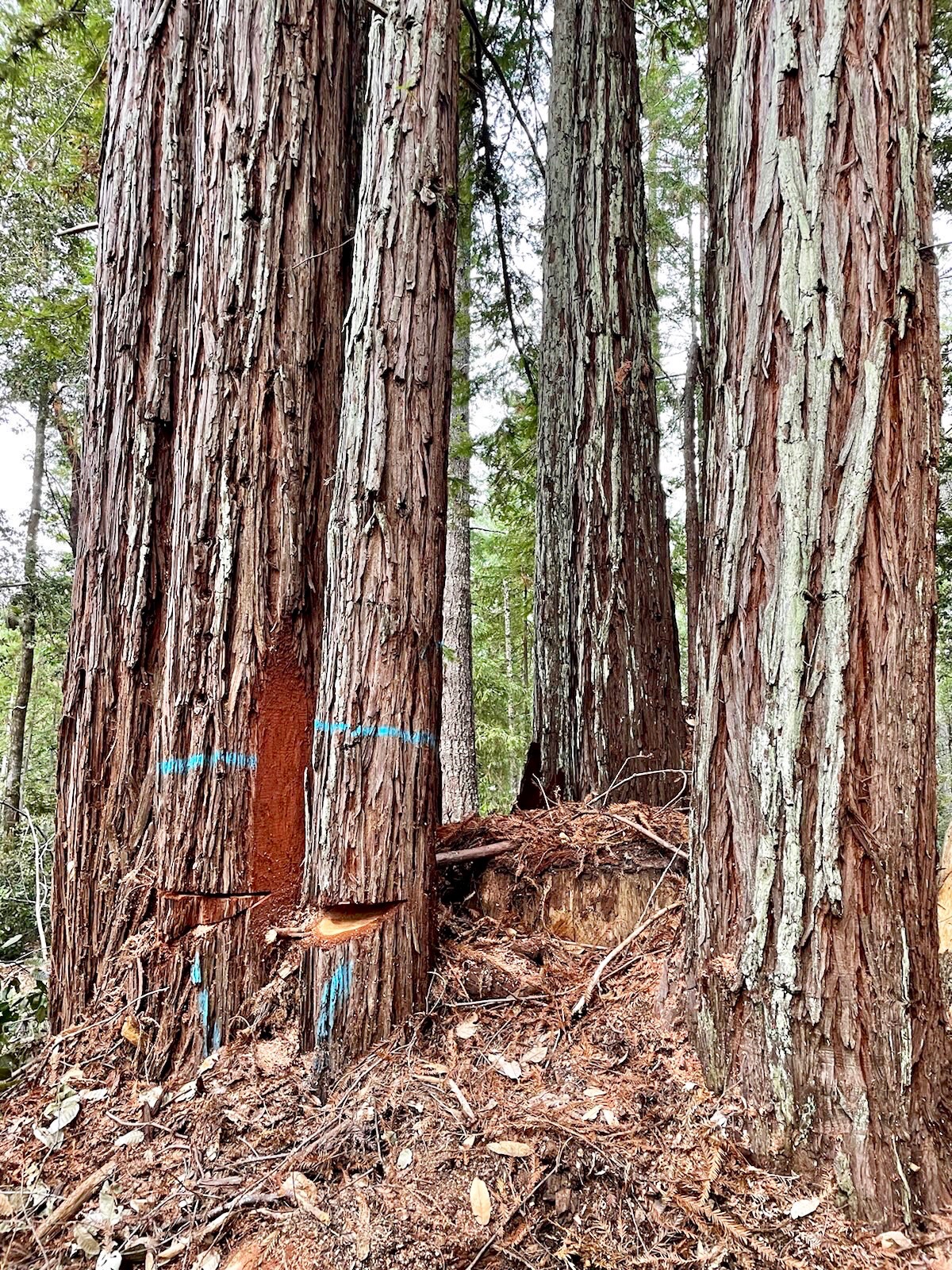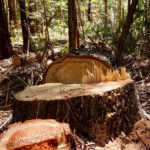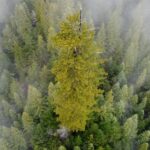On Tuesday, Oct 5, Coyote Valley Tribal Chairman Michael Hunter was on the Soda Gulch site to investigate the veracity of statements made by California Secretary for Natural Resources, Wade Crowfoot, to Hunter and some thirty members of the Association of Tribal Council Chairpersons at a recent meeting in Sacramento, that “no logging is taking place” in Jackson.
Captured on video and audio recordings, Chairman Hunter shows that, in fact, logging is taking place, and documents the death threats and intimidation tactics aimed at him that day. When Hunter asked a nearby faller to please not kill him “accidentally” the man replied “It wouldn’t be accidental.” When a Leer Assets Management security guard hired as a ‘safety officer’ demanded identification of Hunter and told him to leave the property, Chairman Hunter responded, “Who are you to ask me to leave? I’m Pomo. This is my ancestral land”.
Protests in Jackson Demonstration State Forest (JDSF) were met with increasingly dangerous responses this week as loggers threatened nonviolent activists trying to prevent what they see as further destruction of public land. Citizen monitors are hiking miles into the woods to discover and confront active tree falling and yarding operations still taking place on the steep slopes of Soda Gulch timber harvest plan (THP) 1-20-00041 MEN.
Until recently, loggers had stopped falling trees when protestors were present. This week, loggers are instead being told by supervising Registered Professional Forester (RPF) Jason Cerna, to continue falling trees near activists, putting both activists and loggers in danger. Although Calfire has law enforcement power, it has so far declined to arrest any protestors on State property during the protests. Instead, Calfire has hired individuals from Lear Asset Management Security Company who have menaced, harassed and verbally threatened activists, while refusing to identify themselves. On Wednesday, Cerna ordered these so-called “safety officers’ to cut down numerous mature oak trees not marked for cut, in order to block a trail used by activists to reach the logging site.
Loggers have cut wedges out of some trunks but left the trees standing. Some trees have been cut almost clear through from both sides, balancing on a pencil point in the center and creating a hazard to anyone present.
The 440 acre Soda Gulch plan calls for cutting second growth Redwood and Douglas Fir that scientists say are worth more standing as carbon sinks and hedges against climate change than as board feet for private profit. They point out that forest recreation brings in six times more revenue to perennially cash-strapped Mendocino County. Visitors are shocked to learn that clearcuts lie just beyond locked gates along the many foot and bicycle trails in Jackson Forest.
The Soda Gulch plan also calls for herbicides to kill 90% of mostly small and some large Tanoaks across 115 acres of the plan, to be replaced by commercially lucrative Redwood and Douglas Fir. However, the presence of such a large area of tan oak, as shown in 1947 aerial photos, indicate it may be an historic Native orchard. Acorns were planted by Native people as a staple food source that sustained large Indigenous populations and are still vital for cultural restoration and healthy wildlife.
Soda Gulch is one of six THPs being monitored daily by forest protectors. The Coalition to Save Jackson Forest is calling for a moratorium so that JDSF’s out-of-date Management Plan can be updated to reflect current conditions of climate change and the Mission Statement reoriented towards Indigenous co-management.






